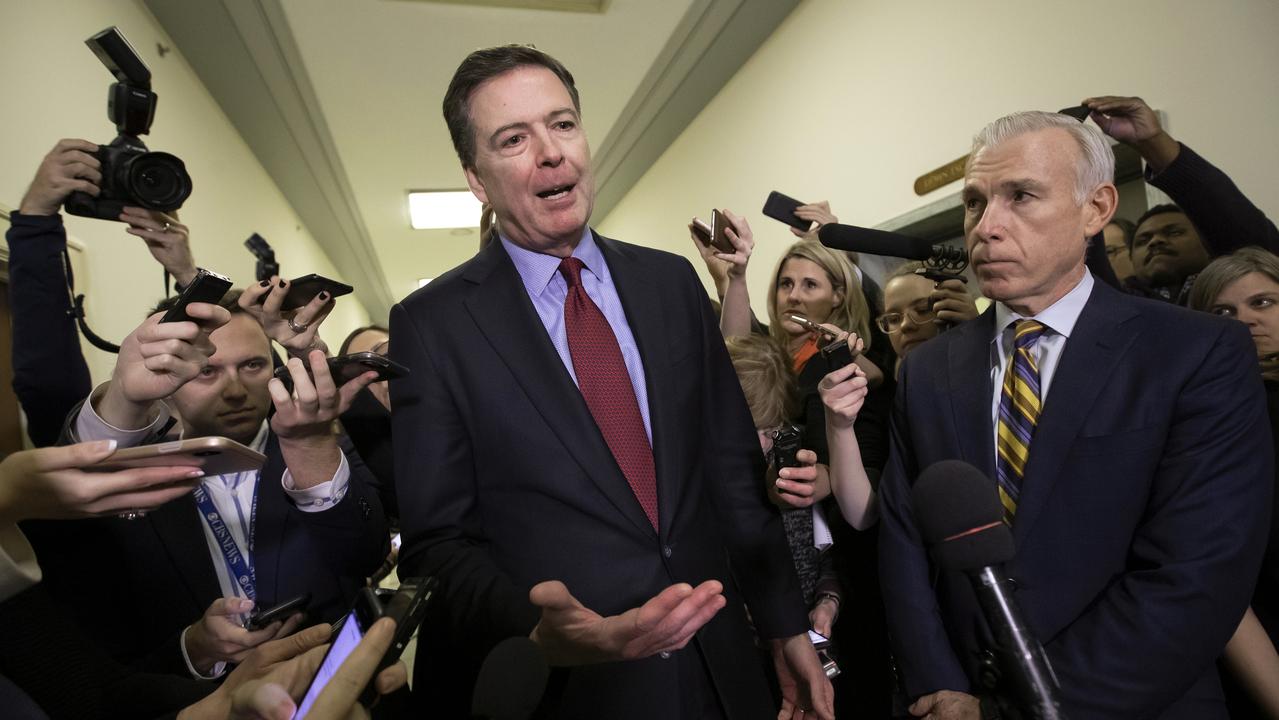Towards clear blue skies after China and US sign Paris pact
Barack Obama has committed the US to putting its money where its mouth is on climate change.

Under unusually clear skies in Hangzhou, China, where factories have been closed and residents sent away to foster “G20 blue” heavens, US President Barack Obama declared yesterday it was time the world’s two biggest economies and greenhouse gas emitters put their money where their mouths are.
Until now, countries representing only about 1 per cent of global greenhouse gas emissions have actually ratified the Paris agreement designed to limit future rises in global temperatures.
But after a widely anticipated but somewhat disjointed series of statements on the eve of the first G20 summit in China, the tally has been pushed to 40 per cent and within striking distance of getting the Paris deal across the line this year. For it to become law, 55 countries representing 55 per cent of global emissions must ratify the deal.
If there is a sense of urgency it is because, unless it is ratified this year, the whole deal could unravel if Donald Trump were to become US president, having publicly declared he does not support it.
If enough countries agree to ratify it before the end of the year, a new US president would have to wait for four years before they could act against it.
Australia has signalled it will ratify the Paris agreement this year but it is the EU, India and Russia that will make or break the deal.
With Brexit and the complicated system of allocating emissions between member states, the EU is considered unlikely to be able to act this year.
India has been a reluctant participant in the Paris agreement from the outset and is seeking support for new technologies and its desire to join the global nuclear club without signing the mandatory non-proliferation treaty.
Russia can be a spoiler in the climate change space.
But the World Resource Institute says the breakthrough that would bring the Paris agreement into force could come as early as this month, with the UN holding a special event on September 21.
WRI says 26 countries, representing 39.06 per cent of total greenhouse gas emissions, have joined the Paris agreement.
“According to our analysis, a further 31 have either committed to join this year or are extremely likely to, based on national statements and completion of domestic ratification processes,” it says.
“This would bring us to 57 countries representing 58.40 per cent of emissions — well over the 55 countries representing 55 per cent of global emissions threshold this year.”
But there are still questions about whether the compromises needed to allow Obama to commit the US States without congressional approval have left much of an agreement in the first place.
Announcing US participation yesterday, Obama said: “We have a saying in America — that you need to put your money where your mouth is.
“And when it comes to combating climate change, that’s what we are doing, both the United States and China.
“We’re leading by example. As the world’s two largest economies and two largest emitters, our entrance into this agreement continues the momentum of Paris and should give the rest of the world confidence — whether developed or developing countries — that a low-carbon future is where the world is heading.”
Obama has used his executive powers to commit the US to the Paris deal. To allow this, the features of the global agreement will not be legally binding on either developed or developing countries.
As US Secretary of State John Kerry said immediately after the Paris deal was done, it was “a binding agreement with respect to transparency and not having binding targets with respect to emissions or finance, because that triggers a different kind of agreement”.
Ahead of the ratification announcement, White House adviser Brian Deese said the arrangements were not without precedent.
“With respect to the legal form of the agreement, the United States has a long and well established process for approving executive agreements — that is, a legal form which is distinct from treaties, which are approved through the advice and consent processes in the Senate,” he said.
As a result of this compromise, the Paris deal works primarily on peer pressure, with different standards for developed and developing nations.
Critics claim developing countries won the so-called differentiation debate because they had no obligation to commit to firm emission limits indefinitely.
The actual agreement says: “Developed country parties shall continue taking the lead by undertaking economy-wide absolute emission reduction targets. Developing country parties should continue enhancing their mitigation efforts, and are encouraged to move over time toward economy-wide emission reduction or limitation targets in the light of different national circumstances.”
Obama is upfront in acknowledging that the Paris agreement alone won’t solve the climate crisis. “But it does establish an enduring framework that enables countries to ratchet down their carbon emissions over time, and to set more ambitious targets as technology advances,” he says.
Chinese President Xi Jinping has praised the Paris agreement as a milestone, saying: “It was under Chinese leadership that much of this progress was made.”
But it is the intersection of China and US interests that gives the Paris agreement the greatest momentum.
It is about putting the money where the mouth is on innovation and technological development and aiming for better environmental outcomes to satisfy the political demands of the hundreds of millions who have been pulled out of poverty by industrialisation.
The demand that factories be shut and skies cleared for G20 is symbolic of the link between affluence and a clean environment.
The latest research shows that if populations can be pulled through lower middle class to greater affluence then their environmental footprint will begin to lighten.
And the development and adoption of new technologies works on many levels, cutting industrial emissions and empowering communities to safeguard environmental assets against mismanagement and corruption.
These themes are outlined in the results of a long-range study that has thrown the spotlight back on how wealth and technology are the keys to better environmental outcomes after all. The study on how humans affect nature found that while the human population had increased 23 per cent and the world economy had grown 153 per cent over the past 16 years, the human footprint on nature had increased by just 9 per cent.
It also shows that as countries become richer and tackle corruption, the environment most often gets a better deal.
Led by Oscar Venter from the University of Northern British Columbia and involving Australian researchers from Queensland University and James Cook University, this study is an update of The Human Footprint, first released in 2002 based on data from the early 1990s.
It uses recently available data on infrastructure, land cover and human access to natural areas to construct a globally standardised measure of the cumulative human footprint on the land environment from 1993 to 2009.
The report says three-quarters of the planet’s land surface is experiencing measurable human pressures that are intense, widespread and rapidly intensifying in places with high biodiversity.
But researchers say they are encouraged by the discovery of decreases in environmental pressures in the wealthiest countries and those with strong control of corruption.
“Clearly the human footprint on Earth is changing, yet there are still opportunities for conservation gains,” the report says.
According to the updated human footprint report, the highest pressure is on the temperate broadleaf forests of western Europe, eastern US and China, and the tropical dry forests of India and parts of Brazil, as well as parts of Southeast Asia’s tropical moist forest.
The areas of no measurable human footprint retreated 9.3 per cent in the latest study period. And the remaining pressure-free lands are concentrated in the boreal and tundra biomes, the Sahara, Gobi and Australian deserts, and the most remote moist tropical forests of the Amazon and Congo basins.
Awareness of the need to protect particularly the equatorial forests is growing and built specifically into the Paris agreement through the schemes such as REDD-plus — reducing emissions from deforestation and forest degradation — that value both natural and cultural capital.
In many parts of the Amazon forest of Peru, for instance, older generations didn’t go to school and have never owned a telephone, but it’s because of a through lack of interest in the modern world.
With the aid of smartphones handed out by Australian scientists, people living in remote villages are becoming a new conservation front line.
The results are written in the pictures. First a shot of a foot, then a selfie, but soon a jungle clearing, a jaguar paw print, a motion sensing camera trap being set, big cat scat and deep scratch marks on a fallen tree. The exact location of each picture is logged by GPS satellite and most were taken in jungle sites many hours from the nearest road or faintest sign of human habitation.
Pictures will be logged and used by scientists around the world to study places they would never otherwise get to. And combined local and international monitoring can help tip the balance against illegal exploitation.
The updated human footprint report admits some surprise at the findings regarding the easing of pressure relative to the rate of economic growth, and the tone of the report is not particularly celebratory.
Contributing author William Laurance, from James Cook University, says the glass is “perhaps two-thirds empty”.
This is nonetheless more upbeat than the position advanced by some who are pushing for human impact to be marked a profound negative in geological time.
A group of scientists has voted to propose the Anthropocene as the Holocene’s successor, with its start at the industrial boom that followed World War II, or perhaps the detonation of the first atomic bomb.
The Holocene comprises the 12,000 years since the last ice age.
At the 35th International Geological Congress in South Africa, which finished yesterday, experts argued that when the Earth is so profoundly changed, the Holocene must give way to the Anthropocene. It will still be some years before the matter is decided.
But Australian National University professor and Anthropocene researcher Will Steffen says while the Anthropocene means many things to many people, a business-as-usual approach is not a viable option.
At the extreme, some argue, the Anthropocene will see accelerating ecosystem collapse in coming decades, with mass extinctions, rising sea levels and increased storm activity.
According to Clive Hamilton on The Conversation website, earth scientists underplay the significance of the Anthropocene by treating it as just another geological epoch rather than signifying rupture of the earth systems.
And writing in the socialist US publication Monthly Review, Ian Angus argues that humanity faces not just more pollution or warmer weather but a crisis of the Earth System. “If business as usual continues, this century will be marked by rapid deterioration of our physical, social and economic environment,” he says.
“Large parts of Earth will become uninhabitable, and civilisation itself will be threatened.”
But for the evolving movement of “eco modernists”, the Anthropocene is seen as a potential force for good rather than a cause for concern.
A provocative Ecomodernist Manifesto signed by respected scientists and environmentalists from the US, Britain, India and Australia last year argues technological advance is the key to better environmental outcomes.
The manifesto says intensifying many human activities — particularly farming, energy extraction, forestry and settlement — so that they use less land and interfere less with the natural world is the key to decoupling human development from environmental impacts.
From this perspective, the findings of the latest human footprint study provide food for thought.
The report says it appears as though the global human economy is increasing its efficiency in the use of land resources when measured in terms of human footprint per person or per dollar GDP.
To further investigate this relationship, researchers quantified the change in the human footprint for countries grouped by income level.
They found an “inverted-U-shaped relationship” for human pressure across income categories, with lower-middle-income countries undergoing the greatest increase in human footprint and high-income countries undergoing the least.
“Moreover, we find that footprint trajectories have actually reversed in the wealthiest nations,” the report says.
They argue “the decrease in human pressures in wealthy countries may indicate a more environmentally sustainable future, with increased wealth and urbanisation leading to reduced human footprint for some countries”.
But they say it is important to determine whether the trend is driven by socio-economic measures and governance conditions, or rather by patterns of trade that allow some countries to transfer their demand for food and raw materials to other countries.
For example, almost 40 per cent of beef produced in the Amazon is not consumed domestically but instead exported for consumption in EU countries.
It will take decades to know for sure, but the evidence is billions are moving out of poverty and will demand from their governments a better environment to live in. The footprint research suggests the struggle is not against capitalism per se but to lift populations above lower-middle-income levels.




To join the conversation, please log in. Don't have an account? Register
Join the conversation, you are commenting as Logout